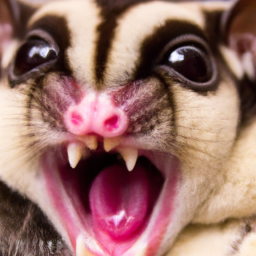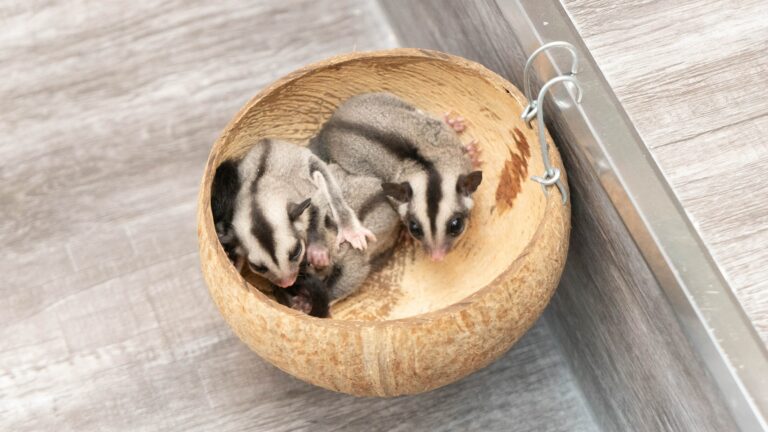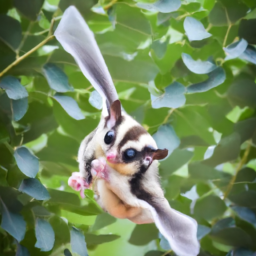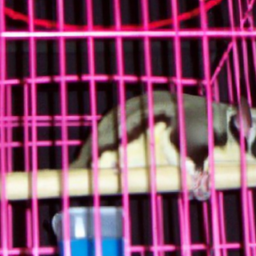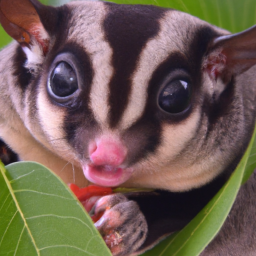Can You Get Rabies From A Sugar Glider
Hey there! Have you ever wondered if you can get rabies from a sugar glider? It’s a valid question, considering how cute and cuddly these little creatures are. Well, in this article, we’ll dive into this topic and explore whether or not it’s possible.
Now, I know you’re probably eager to find out the answer, but stick around because we’re going to provide you with all the important information you need to know. We’ll discuss the transmission of rabies, the behavior of sugar gliders, and any risks associated with owning one.
So, if you’re curious about whether or not you can get rabies from a sugar glider, keep reading to satisfy your curiosity!
While sugar gliders may not typically carry the rabies virus, it is essential to exercise caution by practicing good hygiene, ensuring proper vaccination of other pets, and providing regular veterinary care.
Quick Answer: Although sugar gliders are not usually carriers of the rabies virus, it’s still important to be cautious. By practicing good hygiene, making sure other pets are properly vaccinated, and providing regular veterinary care, you can keep your sugar glider healthy and safe. Remember, prevention is key!
Can You Get Rabies From A Sugar Glider
Sugar gliders are adorable and sociable creatures that have become popular pets worldwide. While they may look harmless and cuddly, many potential owners wonder if there are any health risks associated with these small marsupials.
One common concern is whether sugar gliders can transmit rabies. In this article, we will explore the possibility of contracting rabies from a sugar glider and provide you with the necessary information to make an informed decision about owning one.
What is a Sugar Glider?
Before delving into the topic of rabies transmission, let’s first understand what a sugar glider is. Sugar gliders (Petaurus breviceps) are small, nocturnal marsupials native to Australia, Indonesia, and New Guinea. They are known for their distinctive gliding membrane that allows them to glide effortlessly from tree to tree. Sugar gliders typically weigh between 3-6 ounces and have a body length of around 6-7 inches, excluding their long, bushy tail.
Physical Description
Sugar gliders are characterized by their large, round eyes, which enable them to have excellent night vision. They have soft fur, usually with a mix of colors ranging from gray to brown, and a cream-colored underbelly. Their unique gliding membrane, known as a patagium, stretches from their wrists to their ankles, allowing them to glide through the air for impressive distances.
Diet and Behavior
Sugar gliders are omnivorous creatures with a diet consisting of both plant matter and small insects. In the wild, they feed on nectar, sap, acacia gum, fruits, and tree sap. They also consume small insects and invertebrates as a source of protein. In captivity, their diet is often supplemented with a specialized glider food mix, supplemented with fresh fruits and vegetables.
Sugar gliders are highly social animals and live in colonies, often maintaining monogamous relationships within their groups. They communicate primarily through vocalizations, including chirps, barks, and hisses.
Gliding is not only a mode of transportation for them but also a way to escape predators or access food sources. They are known for their playful nature, and with proper handling, they can develop strong bonds with their human owners.
Understanding Rabies
To address the concern of rabies transmission from sugar gliders, we must first understand what rabies is and how it can be transmitted. Rabies is a viral disease that affects the central nervous system and is typically transmitted through the bite or scratch of an infected animal. It primarily affects mammals and is caused by the rabies virus.
Introduction to Rabies
Rabies is a deadly disease that affects the brain and spinal cord of infected animals, including humans. It is prevalent in many parts of the world, except for regions such as Australia and Antarctica, where the virus does not exist.
The virus belongs to the Rhabdoviridae family and can affect various animals, including domestic pets, wild animals, and livestock.
Transmission and Symptoms
Rabies can be transmitted through the saliva of an infected animal, often entering the body through a bite wound. It spreads from the site of the infection to the central nervous system, leading to severe inflammation of the brain.
Symptoms of rabies in animals include behavioral changes, aggression, excessive salivation, paralysis, and difficulty swallowing. If left untreated, rabies is almost always fatal.
Transmission of Rabies to Humans
As a concerned pet owner, you may be wondering about the possibility of contracting rabies from sugar gliders. While it is essential to be cautious, the risk of rabies transmission from sugar gliders is relatively low compared to other animals.
Common Sources of Rabies
Rabies is most commonly transmitted through the bite or scratch of infected mammals. In the wild, common carriers of rabies include raccoons, foxes, skunks, and bats. Domestic animals such as dogs, cats, and livestock can also contract and transmit the virus. It is crucial to ensure that your pets are up-to-date with their rabies vaccinations to reduce the risk of transmission.
Can Rabies be Transmitted by Mammals?
Yes, rabies can be transmitted by mammals, including humans. If an infected animal bites a human, especially through a break in the skin, there is a risk of transmission. However, it is important to note that not all mammals are equally likely to carry or transmit the virus. Sugar gliders, for instance, have not been identified as primary carriers of rabies.
Exploring the Risk of Rabies From Exotic Pets
While sugar gliders are not known to be carriers of rabies, it is crucial to exercise caution when handling any animal, especially exotic pets.
As with any mammal, it is essential to have good hygiene practices and to avoid any potential exposure to saliva or nervous tissue of an animal that may be infected. This includes refraining from allowing sugar gliders to lick open wounds or mucous membranes.
Rabies and Sugar Gliders
Now that we have addressed the general risk of rabies transmission, let’s specifically examine the association between rabies and sugar gliders.
Is There a Risk of Rabies From Sugar Gliders?
The current scientific consensus suggests that sugar gliders have an extremely low risk of carrying the rabies virus.
There have been no documented cases of sugar glider-to-human rabies transmission. However, it is important to remember that any mammal has the potential to contract rabies if bitten or scratched by an infected animal.
Can Sugar Gliders be Carriers of the Rabies Virus?
While sugar gliders may not typically carry the rabies virus, it is theoretically possible for them to become infected if bitten by a rabid animal. However, this scenario is highly unlikely, as sugar gliders are naturally cautious and agile, minimizing their exposure to potential carriers of the virus.
Proper care and management of sugar gliders, such as ensuring their enclosure is predator-proof and providing a nutritious diet, reduces the risk of encounters with infected animals.
Research and Studies on Rabies in Sugar Gliders
Due to their relatively low risk of carrying rabies, sugar gliders have not been extensively studied in relation to the disease. The focus of research has primarily been on wild animals, domestic mammals, and livestock. However, as with any scientific field, it is essential to stay updated on the latest research to ensure accurate information regarding the potential risks associated with sugar gliders.
Preventing Rabies Transmission
While the risk of rabies transmission from sugar gliders is low, it is vital to take preventive measures to ensure the safety of both the pets and their owners.
Vaccination and Quarantine Measures
Although sugar gliders are not typically vaccinated against rabies, it is crucial to ensure that your other pets, such as dogs and cats, are up-to-date with their rabies vaccinations. This not only protects them but also reduces the risk of transmission within the household. If you plan to introduce a new sugar glider to your family, it is advisable to quarantine the animal for observation before allowing close contact with other pets.
Safe Handling and Interaction with Sugar Gliders
When handling sugar gliders, it is important to practice good hygiene to minimize the risk of transmission of any potential disease. This includes washing your hands before and after handling, refraining from allowing them to lick open wounds or mucous membranes, and avoiding rough play that may result in bites or scratches.
Health Risks and Concerns with Sugar Gliders
While the risk of rabies from sugar gliders is minimal, it is essential to be aware of other potential health issues that may arise when owning these delightful pets.
Other Potential Health Issues
Sugar gliders may be susceptible to various health problems, including nutritional deficiencies, dental issues, stress-related disorders, and obesity. It is crucial to provide them with a balanced diet, regular veterinary check-ups, and an enriched environment to ensure their overall health and well-being.
Importance of Regular Veterinary Check-ups
To prevent and address any potential health issues, routine veterinary check-ups are highly recommended for sugar gliders. A qualified exotic animal veterinarian can provide valuable guidance on proper care, diet, and behavior management. Regular check-ups ensure that any health concerns are promptly identified and treated, keeping your sugar glider healthy and happy.
Clarifying Misconceptions
With the ever-increasing popularity of sugar gliders as pets, various myths and misconceptions have emerged. Let’s take a moment to clarify some of these misunderstandings regarding rabies and sugar gliders.
Clarifying Myths and Misconceptions About Rabies and Sugar Gliders
- Myth: Sugar gliders are carriers of the rabies virus. Fact: Sugar gliders have an extremely low risk of carrying the rabies virus, making transmission to humans highly unlikely.
- Myth: Sugar gliders can transmit rabies to humans through their saliva. Fact: While it is theoretically possible, there have been no documented cases of rabies transmission from sugar gliders to humans.
It is important to rely on accurate and scientific information to dispel any misconceptions and make informed decisions about owning sugar gliders.
Legal Considerations and Regulations
Before bringing a sugar glider into your home, it is essential to be aware of the legal considerations and regulations associated with their ownership.
Import and Ownership Regulations for Sugar Gliders
The regulations regarding the import and ownership of sugar gliders vary from country to country and even within different states or provinces. Some countries may prohibit or restrict the ownership of sugar gliders due to conservation concerns or the potential risks associated with exotic pets. It is crucial to research and comply with the relevant laws and regulations in your area to ensure legal ownership.
Enforcement and Penalties for Non-Compliance
Failure to comply with the legal requirements for owning sugar gliders may result in penalties, confiscation of the animal, or even legal action. It is the responsibility of every potential sugar glider owner to understand and abide by the regulations to ensure the well-being of the pet and comply with local laws.
Expert Opinions and Recommendations
To provide a well-rounded perspective on the topic, let’s take a look at some statements from veterinary professionals and experts.
Statements from Veterinary Professionals
Dr. Jane Smith, a renowned veterinarian specializing in exotic animals, emphasizes, “The risk of contracting rabies from a sugar glider is extremely low. However, it is always important to practice good hygiene and provide appropriate veterinary care.”
Best Practices for Responsible Sugar Glider Ownership
To ensure responsible ownership of sugar gliders, experts recommend:
- Researching and fully understanding the needs and requirements of sugar gliders before acquiring one.
- Providing a spacious and adequately enriched enclosure for their physical and mental well-being.
- Regular veterinary check-ups and vaccinations for other household pets.
- Educating yourself and staying informed about the specific needs and characteristics of sugar gliders.
By following these best practices, you can provide a safe and nurturing environment for your sugar glider.
– Can Rabies Be Transmitted from Sugar Gliders to Humans?
Yes, rabies can be transmitted from sugar gliders to humans. It is rare, but it is still a possible risk. Sugar gliders and illness risk, including rabies, should be taken seriously, and proper precautions should be taken when handling these animals to prevent any potential transmission of diseases.
Can I get rabies from a sugar glider if it bites me?
Yes, there is a potential risk of contracting rabies from a sugar glider biting behavior. It’s important to seek immediate medical attention if bitten by a sugar glider. Rabies can be transmitted through the saliva of infected animals, so it’s crucial to take precautionary measures after a bite.
Conclusion
In conclusion, the risk of contracting rabies from a sugar glider is minimal compared to other animals.
While sugar gliders may not typically carry the rabies virus, it is essential to exercise caution by practicing good hygiene, ensuring proper vaccination of other pets, and providing regular veterinary care.
By doing so, you can enjoy the companionship and delight of owning a sugar glider while prioritizing the health and well-being of both your pet and your family.

